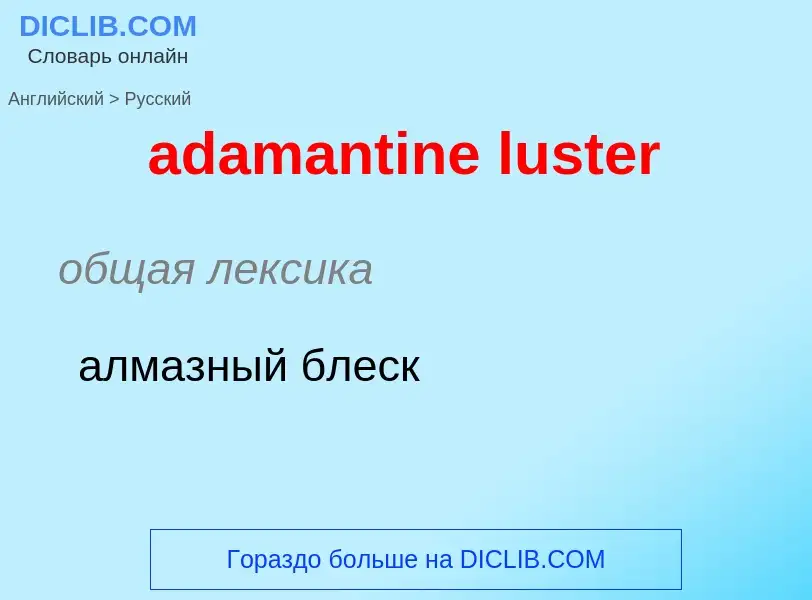Translation and analysis of words by ChatGPT artificial intelligence
On this page you can get a detailed analysis of a word or phrase, produced by the best artificial intelligence technology to date:
- how the word is used
- frequency of use
- it is used more often in oral or written speech
- word translation options
- usage examples (several phrases with translation)
- etymology
adamantine luster - translation to russian
общая лексика
алмазный блеск
общая лексика
стеклянный блеск
['lʌstrəs]
общая лексика
глянцевитый
лоснящийся
блестящий
прилагательное
общая лексика
блестящий
глянцевитый
блестящий (о таланте и т. п.)
лучезарный (о характере и т. п.)
синоним
Wikipedia
Lustre (British English) (or luster) (American English; see spelling differences) is the way light interacts with the surface of a crystal, rock, or mineral. The word traces its origins back to the Latin lux, meaning "light", and generally implies radiance, gloss, or brilliance.
A range of terms are used to describe lustre, such as earthy, metallic, greasy, and silky. Similarly, the term vitreous (derived from the Latin for glass, vitrum) refers to a glassy lustre. A list of these terms is given below.
Lustre varies over a wide continuum, and so there are no rigid boundaries between the different types of lustre. (For this reason, different sources can often describe the same mineral differently. This ambiguity is further complicated by lustre's ability to vary widely within a particular mineral species). The terms are frequently combined to describe intermediate types of lustre (for example, a "vitreous greasy" lustre).
Some minerals exhibit unusual optical phenomena, such as asterism (the display of a star-shaped luminous area) or chatoyancy (the display of luminous bands, which appear to move as the specimen is rotated). A list of such phenomena is given below.

![[[Pyrite]] [[Pyrite]]](https://commons.wikimedia.org/wiki/Special:FilePath/Pyrite 3.jpg?width=200)
